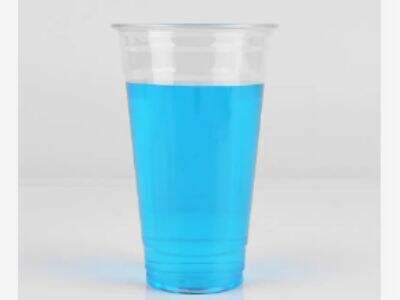A korábbi időkben a emberiek fából, földből és vasból készült kupákba ittak. Ezek rendkívül súlyosak voltak és néha nagyon nehéz volt őket elkészíteni. De a 1960-as években minden megváltozott egy kicsit több felfedezéssel: a plastikos kupák miatt. Hétmunkanapokkal később ezek a kupák majdnem teljesen eltértek az előző emberek által használtaktól.
Mi a Plastikos Kupák?
Vasalék poharak: könnyek, olcsók és egyszerűen gyártottak. Egyszerűségük miatt a emberek széles körben kezdtek használni őket különféle eseményeken. Elérhetők lesznek bulikon, piknikken, sőt otthon vagy iskolában való italozásra is. De tudta volna, hogy hogyan gyártják a vasalékokat? A vasalék kis építőelemei polimerek nevezzük. Ezek a polimerek hosszú molekulai láncok. A leggyakrabban használt polimer a plasztikos Kupa polyetilen. Ez egy polimer, amely az etilénből származik, ami általában olajból vagy természetes gázból származik. Ez összekapcsolja a vasalék eredetét a fosszilis üzemanyaggal.
A vasalék problémája
A szemétgombók nagyon kényelmesek és hasznosak, de a természetnek is ártanak. A legnagyobb hibájuk, hogy a szemétgombó nem bomló. Egy gombó 200-ig 700 évet vesz igénybe teljesen eltűnni a Föld kezdetei óta. Ez azt jelenti, hogy rengeteg szemétgombó, amely a személyre került, ma másvilágos alakzatba bomlott. Ez rossz dolog a bolygóink számára. Emellett, a szemétgombók különböző típusai szintén káros anyagokat tárolhatnak magukban, amelyek felforrathatják az ételünket és italainkat, és idővel szervezetünkben halmozódhatnak fel, ami súlyos egészségügyi problémákat okozhat.
Szemétgombók az életünkben
Általánosan, a szemétből készült kupák nagyon gyakran használatosak. Találkozókon, étteremben, és akár otthon is a családi ebédidőben. Már részvényünk lettek a kulturánkban. A szemétből készült kupák néha egyetemi bulikon is használnak, mert nem kell takarítani (csak eldobják őket). Valójában, még egy játék is van, amit sörpóngról neveznek, ahol a nép póngballal próbálja eltalálni a szemétből készült kupákat pontokért. Akár a gyorsételek helyeinek is italokat kínálnak készen az utasoknak — ezért a szemétből készült kupák sokszor találkozunk velük a napi életben. plasztikos pohár és fedél a menekülők ügyében — tehát a szemétből készült kupák valamennyire sok mindennapjainkban.
Jobb lehetőségek keresése
Mivel a plasztik egyáltalán nem jó a környezet számára, sok vállalat kutat újabb pohárkészítési megoldásokat. Néhány cég megpróbálja poharakat gyártani kukorica- és cukrotból, mindkettő növényalapú anyag. Ezek az anyagok nem ártanak a Földnek, mert segítenek abban, hogy a termékek, amelyekbe kerülnek, természetes feldomborulást végezzenek. Épp most fejlesztenek ki újrahasznosítható poharakat a vállalatok, de csupán egyszer használhatóak. Ez maximalizálná a hulladék csökkentését, amit az egyszer használatos plasztikos poharakból ered.
A poharak jövője
Összefoglalva, tiszta plasztikos pohár fedéllyel széles körűen elterjedtek és bevezetésre kerültek a életünk nagyrészt minden tényezőjében. Kiválóak és egyszerűek használatban, bár meg kell vizsgálnunk, milyen hatással vannak a környezetre. Ezek problémák megértése mellett növényi anyagokból készült kompozítmányosanyagok vagy újrahasznosítható kupák alkalmazása segíthet abban, hogy a kupák jövője sokkal kevésbé rossz legyen a világnak. Ha sikerül ezeket a változtatásokat megvalósítani, nemcsak élhetnénk a kupák előnyeivel, hanem megvédenénk a környezetet az jövő generációk számára.








